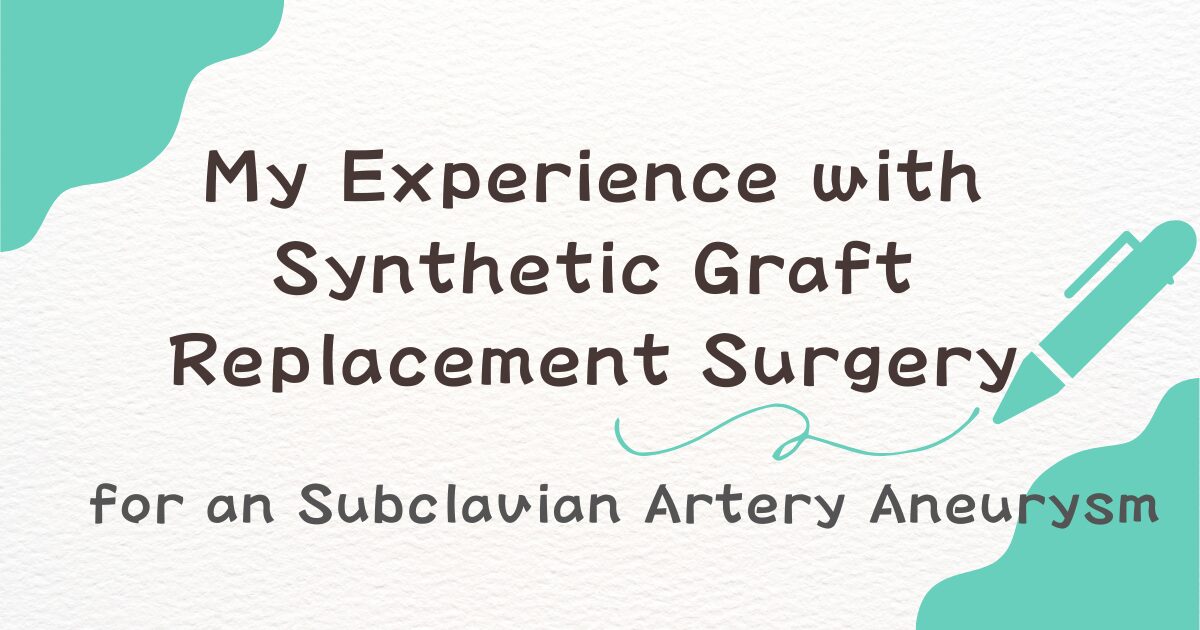Hello, I’m Mikan!
With Loeys-Dietz Syndrome (LDS), the connective tissue is weak, making it easy for aneurysms to develop in blood vessels throughout the body. In this post, I’ll share my experience with subclavian artery aneurysm surgery.
Early Symptoms of the Subclavian Artery Aneurysm
I first noticed something unusual when I observed a bulge near the top of my collarbone. I was massaging the area to relieve shoulder stiffness when I discovered it. At the early stage, there were no significant symptoms, so I was simply under observation.
However, one morning, I woke up feeling that only the arm on the side with the aneurysm felt unusually heavy and sluggish. By midday, a sharp, electric-like pain shot through that arm. I immediately thought, “This could be serious,” and went to the hospital right away. During the examination, the doctor reassured me by saying, “As long as you can feel the pulse, everything seems fine.” Apparently, if bleeding were to occur from an aneurysm, the pulse would disappear. Checking the pulse can be a helpful indicator when deciding whether to seek medical attention.
The tests showed no significant changes or hematoma in the aneurysm, so I felt a bit relieved. However, it was decided that I would undergo surgery to replace the subclavian artery aneurysm with a synthetic graft.
Purpose of the Subclavian Artery Aneurysm Surgery
According to my doctor, the surgery had two main objectives:
- Prevent Nerve Compression:
The aneurysm could press on nearby nerves and cause numbness. - Prevent Blood Stasis and Clot Formation:
Blood pooling within the aneurysm can lead to clots, which might travel to areas like the fingertips and cause blockages.
The Surgery and Postoperative Recovery
Having undergone several surgeries before, I trusted my doctor completely and approached the day of the surgery without overwhelming anxiety.
Postoperative Challenges
- Numbness in the Fingertips:
One of the symptoms after surgery was numbness in my fingertips. Thankfully, this gradually improved over time, though it did take a while to fully resolve. - Clothing Limitations Due to Visible Incisions:
I generally avoid wearing clothes with wide necklines. However, even with crew necks, the incision sites were sometimes visible from certain angles. To hide the scars, I switched to high-neck clothing. In particular, I found Uniqlo’s cashmere-blend Heattech to be very comfortable—it’s thin, and it doesn’t interfere with other outfits.
In Summary
The surgery for my subclavian artery aneurysm was necessary to reduce the risks associated with the aneurysm. Recovery times vary from person to person, and it’s important to allow your body time to heal gradually.
I hope that sharing my experience can be a helpful reference for anyone considering similar surgery. Remember, each person’s situation is unique, so make sure to discuss all the details with your doctor and proceed at a pace that feels right for you.
You’re not alone on this journey—take care and stay safe!


